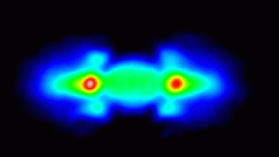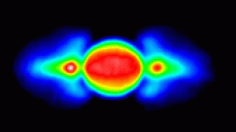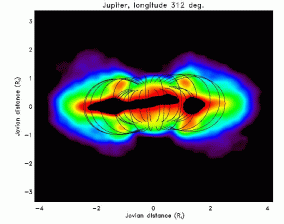The Solar System
- The "radio" sun
- The radio planets
The sun was one of the first objects studied by radio astronomers. It is the strongest radio source in the sky.Apart from a thermal component (called "Quiet Sun") due to the tail of the black body emission which enters in the area of radio wavelengths, there are other variable components linked to the activity of the solar flares
Images are in false colours.
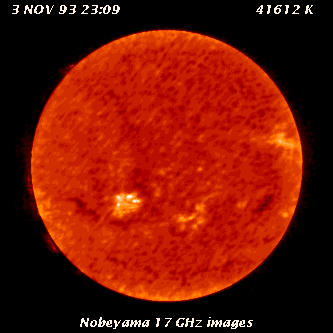 |
Fig. 1: This
series of observations at 17 GHz , made between 3 and 10 November 2003,
shows the thermal emission from the solar
cromosphere (Credit: cortesia di Steven White (UMd)) |
|
Radio emission from the planets is very weak; it is what remains of the black body But Jupiter is a special case. Jupiter is in fact an intense source of radio waves with emissions that cover a large range of wavelengths, from centimeters to tens of meters. At shorter wavelengths the emission is more or less constant, while in the range of 10 m wave lengths, the emissions occur irregularly both in terms of duration and frequency. The explanation which tends to be given for this phenomenon is that of the existence around the planet of charged particles which move along the Jupiter's magnetic field lines (see Fig. 4). Jupiter's magnetic field produces a magnetosphere about 100 times larger than the earth's magnetosphere. It is extremely sensitive to the effect of solar wind that causes rapid and frequent contractions and expansions. |
| |
|
| ||
|
|
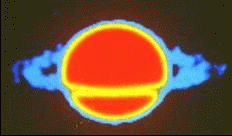 Fig. 5: An image of Saturn at 2 cm wavelength. The disc (similar in size to the optical one) and the ring system are clearly visible. (Credit: The Astronomical Society of Pacific) |
The case of Saturn is different. Here, radio emission is due to thermal processes, so the radio image is very similar to the optical one. |
